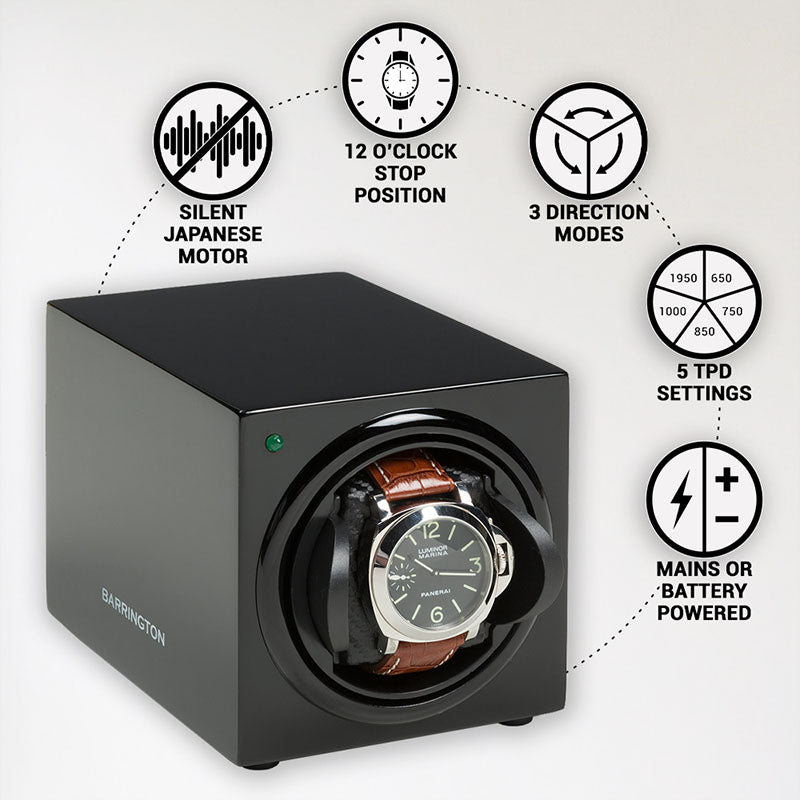What is Dual Time?
In the world of horology, few complications are as useful to the modern traveller or international professional as the dual time function. Designed to display two different time zones simultaneously, the dual time watch bridges the distance between places and people, embodying a spirit of global connection. It is not only a feat of mechanical ingenuity but also a reflection of a world that values precision, coordination, and the ability to stay in touch across continents.
The dual time complication is distinct from more complex travel functions like the world time or GMT, yet it offers a perfect balance between simplicity and functionality. Its purpose is straightforward: to let the wearer know the time both at home and abroad at a single glance. Whether on a business trip, coordinating with a distant colleague, or maintaining contact with loved ones across the globe, a dual time watch provides a seamless way to manage time across borders.
The Origins of the Dual Time Complication
The origins of the dual time watch date back to the early 20th century, a period marked by the rise of international travel and communication. As aviation and global trade expanded, the need for timekeeping that could accommodate multiple time zones became increasingly important.
The first known dual time watches appeared in the 1930s, with brands such as Patek Philippe and Rolex experimenting with ways to display two different times on one dial. These early designs were simple, often featuring an additional sub-dial or hour hand that could be adjusted independently.
In 1955, Rolex introduced the GMT-Master, developed in collaboration with Pan American Airways for pilots navigating long-haul flights. Although technically a GMT rather than a dual time watch, it popularised the concept of tracking multiple time zones on the wrist. Around the same period, Jaeger-LeCoultre, Longines, and Universal Genève began producing their own dual time models, each interpreting the function in unique ways.
The dual time complication continued to evolve throughout the 20th century. While pilots, explorers, and businessmen valued its practicality, watchmakers appreciated the creative possibilities it offered. The design challenge of displaying two sets of time without cluttering the dial encouraged innovation in both aesthetics and movement engineering.
How a Dual Time Watch Works
The basic principle of a dual time watch is simple: it displays two different time zones simultaneously, allowing the wearer to read both local and home time. How this is achieved depends on the movement design and the watchmaker’s approach.
Most dual time watches feature two hour hands: one for local time and one for home time. The local time hand is typically adjusted independently, while the home time hand remains fixed to the wearer’s usual time zone.
There are several methods of implementing the dual time function:
-
Two Independent Hour Hands
In this design, the main dial displays local time, while a secondary hand or indicator shows the time in another zone. The secondary hand often makes one full rotation every 12 hours, sometimes distinguished by a different colour or shape to avoid confusion. -
Sub-Dial Display
Some watches include a smaller sub-dial dedicated to home or secondary time. This layout provides visual separation and often allows for additional design creativity, such as day-night indicators or 24-hour scales. -
Two Complete Dials
In more complex models, the watch features two entirely independent dials, each with its own movement or time display. This is often seen in high-end or avant-garde designs, allowing for precise differentiation between time zones. -
24-Hour Dual Time Display
Certain watches use a 24-hour scale for one of the time zones to indicate whether it is day or night. This is particularly useful when coordinating with people in distant regions where time differences may result in opposite times of day.
Some watches also incorporate quick-set mechanisms, allowing the local time hand to be adjusted in one-hour increments without stopping the movement. This feature is invaluable for travellers who cross time zones frequently.
The Difference Between Dual Time and GMT
The terms dual time and GMT are often used interchangeably, but there is a subtle distinction between them. A GMT watch typically uses a 24-hour hand in conjunction with a rotating bezel marked with 24-hour increments. The bezel allows the wearer to read a third time zone, making it slightly more complex and versatile than a traditional dual time watch.
In contrast, a dual time watch focuses on displaying only two time zones in a more straightforward and often more elegant manner. It does not necessarily include a 24-hour hand or rotating bezel. Instead, it prioritises clarity, balance, and simplicity, making it ideal for those who want the function without the technical intricacy of a GMT mechanism.
Design and Aesthetic Considerations
Designing a dual time watch requires exceptional skill, as the watchmaker must present two distinct times without overwhelming the dial or compromising legibility. The best dual time watches achieve a balance between functionality and visual harmony.
Common design features include:
-
Contrasting Hands or Colours
Dual time watches often use contrasting colours or shapes to differentiate between local and home time. For instance, the secondary hand may be blued or skeletonised to make it easily identifiable. -
Subtle Complications
Some watches incorporate additional indicators, such as day-night discs or AM/PM markers, to help the wearer distinguish between day and night in the home time zone. -
Symmetry and Proportion
Maintaining a clean, symmetrical layout is crucial. Whether using sub-dials or dual hands, the best designs ensure that the dial remains elegant and uncluttered. -
Readable Scales
The inclusion of clear hour markers, minute tracks, and numerals ensures accuracy and usability, even at a glance.
Luxury brands often elevate the design through meticulous finishing, guilloché patterns, and refined case proportions. In the finest examples, the dual time function enhances the watch’s character rather than dominating it.
Iconic Dual Time Watches
Throughout horological history, several dual time watches have achieved legendary status for their innovation, elegance, and practicality.
-
Jaeger-LeCoultre Reverso Duo
The Reverso Duo uses the brand’s signature reversible case to display two separate dials, each showing a different time zone. The mechanism is elegant and discreet, perfectly aligned with the Reverso’s Art Deco heritage. -
Patek Philippe Calatrava Travel Time
A masterpiece of sophistication, this model allows independent adjustment of the local hour hand through pushers on the side of the case, while the home time remains visible via a secondary skeletonised hand. -
A. Lange & Söhne Lange 1 Time Zone
Combining traditional craftsmanship with innovative design, the Lange 1 Time Zone uses two distinct dials to show local and home time, complemented by a city ring for easy reference. -
Rolex Sky-Dweller
While technically a dual time and annual calendar watch, the Sky-Dweller stands out for its unique off-centre 24-hour disc that indicates a second time zone, seamlessly integrated into Rolex’s robust design. -
Vacheron Constantin Overseas Dual Time
Designed for travellers, this watch combines sporty elegance with precise timekeeping, featuring a clear dual time display and date adjustment linked to the local hour hand.
These models illustrate the diversity of approaches to the dual time function, from classic understatement to complex mechanical execution.
The Mechanical Complexity Behind Dual Time Watches
Although the concept of a dual time watch appears simple, executing it with mechanical precision requires skill and innovation. The challenge lies in enabling one hour hand to move independently without affecting the timekeeping accuracy of the primary system.
In many mechanical dual time movements, an additional gear train is linked to the hour wheel, allowing one hand to be adjusted separately. Some models incorporate a differential mechanism that coordinates both displays while maintaining correct synchronisation with the main gear train.
Watchmakers must also account for the 12-hour or 24-hour differentiation, ensuring that the display remains intuitive for the wearer. The mechanism must provide tactile precision, allowing for smooth and exact adjustments without damaging delicate internal components.
High-end brands often display this craftsmanship through transparent casebacks, revealing the intricate arrangement of gears, bridges, and levers that make dual timekeeping possible.
The Practical Benefits of Dual Time Watches
In today’s interconnected world, the dual time watch remains one of the most relevant complications in horology. Its benefits extend beyond aesthetics or mechanical fascination.
-
Convenience for Travellers
Whether crossing time zones for business or leisure, a dual time watch eliminates the need to reset the main time constantly. The wearer can simply adjust the local hand while maintaining awareness of home time. -
Professional Utility
For individuals who work across international offices or communicate with global partners, being able to track two time zones at once helps manage schedules and avoid miscommunication. -
Emotional Connection
The dual time function carries an emotional dimension, allowing wearers to feel connected to distant loved ones or important locations. It symbolises a bridge between worlds, a reminder of people and places that matter. -
Aesthetic Versatility
Beyond functionality, dual time watches often exhibit beautiful design balance, making them suitable for both professional and casual wear.
Modern Interpretations and Innovations
The dual time complication continues to evolve, reflecting advances in both mechanical and digital technology. Contemporary models often feature refined movement architecture, improved energy efficiency, and enhanced legibility.
In luxury horology, brands like Audemars Piguet, Breguet, and F.P. Journe have reimagined the complication with distinctive visual and mechanical approaches. Some use jumping hour displays or rotating discs, while others introduce innovative adjustment systems operated through the crown rather than pushers.
Meanwhile, in the era of smartwatches, the concept of dual timekeeping has been reinterpreted through digital interfaces, offering seamless synchronisation with global time servers. Yet despite these advancements, mechanical dual time watches retain their allure, symbolising craftsmanship and the romance of travel.
Conclusion
The dual time watch is one of the most practical and emotionally resonant complications in watchmaking. It reflects humanity’s relationship with distance and connection, combining utility with beauty in equal measure. From early mechanical innovations to modern masterpieces, the dual time function continues to embody the sophistication of horological design.
Elegant, purposeful, and inherently human, the dual time watch serves as a reminder that even in a digital world, the art of measuring time across borders remains both a technical achievement and a poetic expression of global unity.









